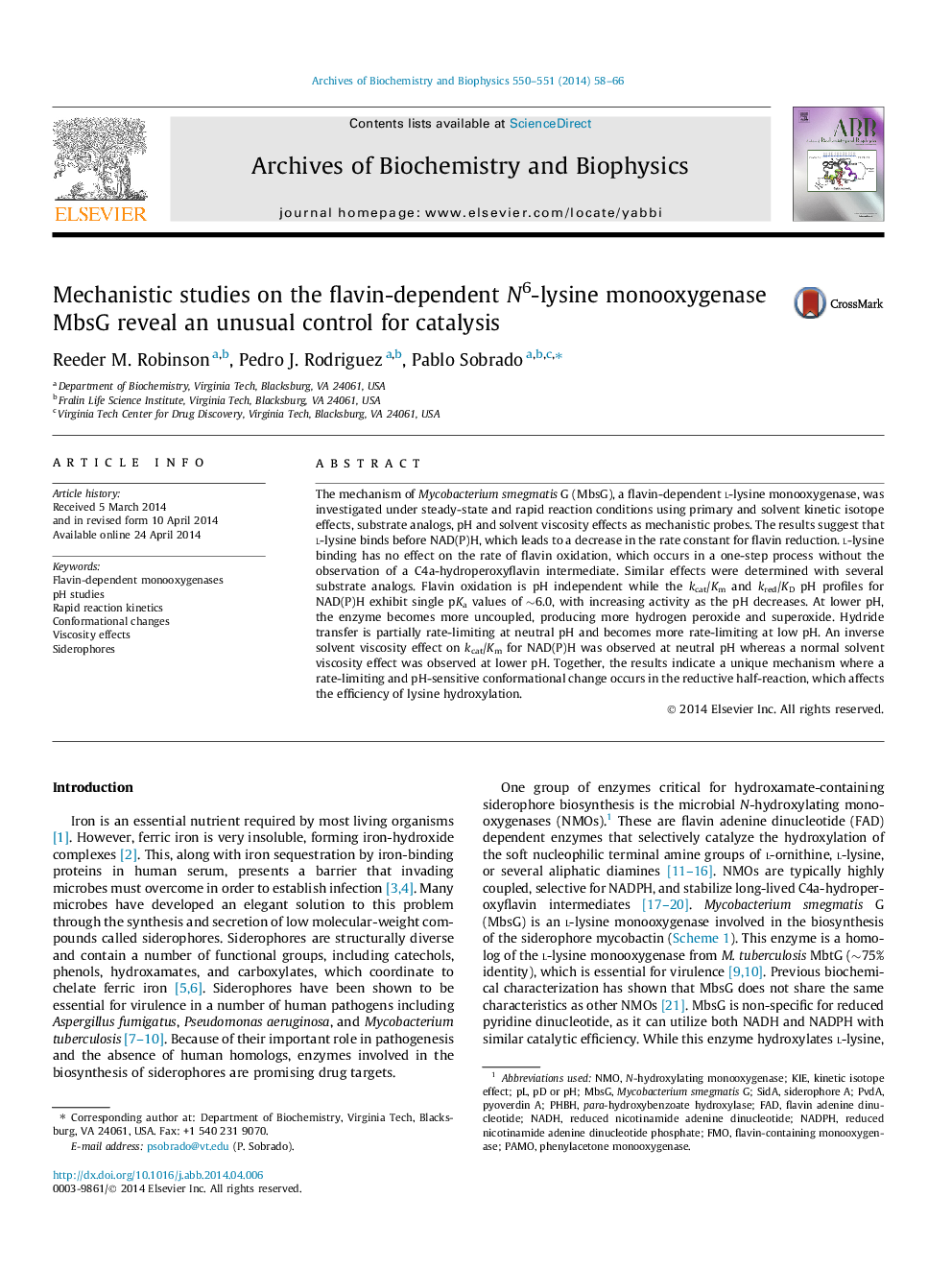| کد مقاله | کد نشریه | سال انتشار | مقاله انگلیسی | نسخه تمام متن |
|---|---|---|---|---|
| 1925159 | 1536349 | 2014 | 9 صفحه PDF | دانلود رایگان |

• MbsG is an N6-lysine monooxygenase that utilizes either NADH or NADPH.
• Primary kinetic isotope studies show hydride transfer is partially rate-limiting.
• Binding of lysine reduces the rate constant for flavin reduction.
• pH studies indicate that flavin reduction is accelerated at low pH.
• A rate-limiting pH sensitive conformational change regulates the catalytic cycle.
The mechanism of Mycobacterium smegmatis G (MbsG), a flavin-dependent l-lysine monooxygenase, was investigated under steady-state and rapid reaction conditions using primary and solvent kinetic isotope effects, substrate analogs, pH and solvent viscosity effects as mechanistic probes. The results suggest that l-lysine binds before NAD(P)H, which leads to a decrease in the rate constant for flavin reduction. l-lysine binding has no effect on the rate of flavin oxidation, which occurs in a one-step process without the observation of a C4a-hydroperoxyflavin intermediate. Similar effects were determined with several substrate analogs. Flavin oxidation is pH independent while the kcat/Km and kred/KD pH profiles for NAD(P)H exhibit single pKa values of ∼6.0, with increasing activity as the pH decreases. At lower pH, the enzyme becomes more uncoupled, producing more hydrogen peroxide and superoxide. Hydride transfer is partially rate-limiting at neutral pH and becomes more rate-limiting at low pH. An inverse solvent viscosity effect on kcat/Km for NAD(P)H was observed at neutral pH whereas a normal solvent viscosity effect was observed at lower pH. Together, the results indicate a unique mechanism where a rate-limiting and pH-sensitive conformational change occurs in the reductive half-reaction, which affects the efficiency of lysine hydroxylation.
Figure optionsDownload high-quality image (121 K)Download as PowerPoint slide
Journal: Archives of Biochemistry and Biophysics - Volumes 550–551, 15 May 2014, Pages 58–66